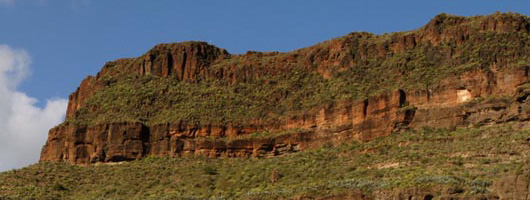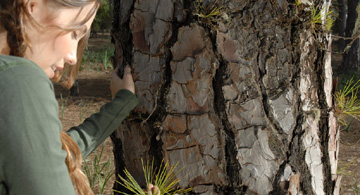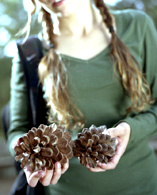The Festivals in honour of la Virgen de La Cuevita (Our Lady of the Little Cave) are the most popular ones in the municipality of Artenara and in the island of Gran Canaria, as they have made the area a place of pilgrimage and processions from all the municipalities. The fiesta begins on August 15 with la Bajada de la Imagen (the Bringing of the Statue) from the Sanctuary to the Parish Church, where the religious ceremonies and sports and folklore events take place during the week. These include the cycle race from Las Palmas de Gran Canaria to the village, as la Virgen de La Cuevita is the Patron Saint of Cycling in the island.

A highlight is la Ofrenda a la Virgen (Offering to Our Lady), with the participation of several folk groups in their traditional costumes, with songs and dancing, as la Virgen de La Cuevita is also the Patron Saint of the Canary Islands Folklore Groups. At dusk the statue is returned to the chapel, which is surrounded by fireworks and bonfires, making it an unforgettable sight.
In Artenara you can also enjoy la fiesta de San Matías, every 24th of February; the night time procession of the Corazón de Jesús (Sacred Heart), in the month of June; la Fiesta del Cristo (Christ’s feast day), on September 14th; and la Fiesta de la Candelaria, on the second Sunday of October. On May 15th la Fiesta de San Isidro is held, with the procession of farmers, accompanied by street musicians. In Artenara la Quema de Judas (Burning of Judas) during Easter is also popular.
The region of Artenara was an important native settlement. The pre-Hispanic inhabitants were found in particular in Acusa, Artenaraand Tirma. After the conquest of Gran Canaria, and due fundamentally to the inaccessibility of the peaks, the native race survived a century longer and later mixed with the Castilian and Portuguese families who settled in the area. As in other areas of the island, the land in Artenara was divided up and granted to the new settlers.

These settlers, like the native Canary Islanders, were involved in livestock grazing and subsistence farming, primarily based on growing cereals.
The Church in the area of Artenara goes back to the seventeenth century, when the evangelising activities that were undertaken brought about the need to provide the region with places of worship.
In line with this, the chapel of la Candelaria, in Acusa, was built, as well as the chapel of el Rosario, later called the chapel of San Matías, in Artenara, both dependent on the Parish Church of Gáldar. The Church of San Matías became a Parish Church in 1839.

Little by little the agricultural and farming population began to settle in the vicinity of the chapels, and the towns of Acusa and Artenara took shape. At the beginning of the seventeenth century the first royal mayor, Antonio González del Río, was appointed as the sole mayor for both places. Later, in 1734, Artenara became an independent municipality.
The settling of the region was a slow process, due to the fact that the major part of the workforce in the island was involved in the sugar industry. At the end of the sixteenth century this situation changed, producing a large demographic increase.
In the twentieth century the municipality underwent a rural exodus, due to the socio–economic conditions and the intrinsic characteristics of the area.
The municipality of Artenara is located in the central-northwest part of the island of Gran Canaria, and it has a surface area of 66.69 square kilometres. It is a small town located in the peak area of the island at an altitude of 1.270 metres above sea level.


Although the municipality of Artenara is primarily interior, part of its territory extends down to the coast. It has very sheer orography and among its large expanses of forest can be seen the mountains of Los Moriscos, La Mora, Roque García, El Brezo, Altavista(1.376 m) and Tamadaba with Pico Bandera (1.444 m). The forests of Tamadaba and Tirma have become two of the best-preserved natural areas of Gran Canaria due to their virtual inaccessibility.
Artenara has the largest geographical basin of the island, la Caldera de Tejeda. Also in this municipality there are the oldest geological materials found in Gran Canaria, and it is in fact one of the towns with the largest number of caves which were once dwellings of the native population.
The base of the economy of Artenara continues to be agricultural activity based on potatoes, corn and irrigated fruit crops. This agricultural base is complemented by grazing of goats and sheep, which in Artenara is an activity still maintained by the oldest inhabitants.